Capture One 11.3 launched last week with the new ability to tether to and process Fuji RAF format raw files from the medium format GFX 50S.
Until now, files from cameras like the X-Pro2, X-T2, and X100 series camera could be processed, but since the debut of the GFX 50S earlier this year, Capture One support has been conspicuously absent.
There was, of course, the option to avoid 3rd party apps altogether and use the Fujifilm X Raw Studio application. In addition to the program having a somewhat clunky interface, it required the camera to be tethered to the computer in order for the computer to queue files into the GFX’s internal processor to export the finished TIFFs. This process still remains as the only workflow that supports the Fujifilm looks of Provia/Velvia/Astia etc.
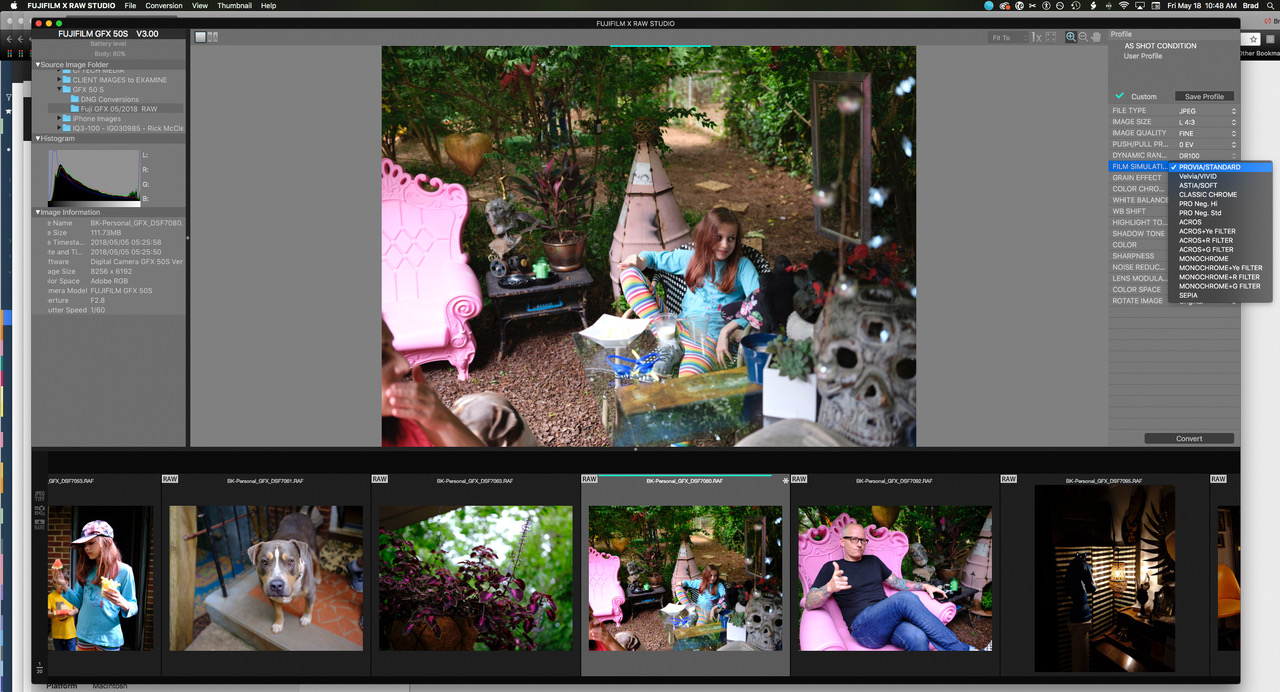
GFX users found multiple workflows around Capture One’s obvious GFX exclusion by varyingly laborious processes, one of which was to first use Adobe’s free DNG converter to change the RAF file to DNG, then use an EXIF data scrubber to change the camera type from Fuji GFX50S to a Phase One IQ250. There were a couple dozen such workarounds employing various inexpensive or free bits of software.
Importing these files into Capture One gave generally pleasing results, at least a good place to start from, especially for landscape shooters who desired some colorful punch out of their images, but missing from this workflow entirely was the ability to apply Lens Corrections for the suite of GFX primes and zooms available in the GFX mount.
Now that official support is available, Capture One once again dazzles us with exceedingly pleasant nuance and accuracy, especially in the skin tones that was not available in the aforementioned approaches, as well as full tethered support. (An approximation of which was only available through the scripting of the above processes and enabling hot-folders in Capture One, resulting in at least 5 seconds of latency from shooting to seeing your image on screen.)
As the following images demonstrate, the RAF files as displayed directly in Capture One (on right) may seem underwhelming in their initial color scape compared to the DNG converted files, but the overall look is very accurate to the actual conditions at the time of capture, without the runaway luma and saturation that seemed present in all of the fooled into IQ250 format images.
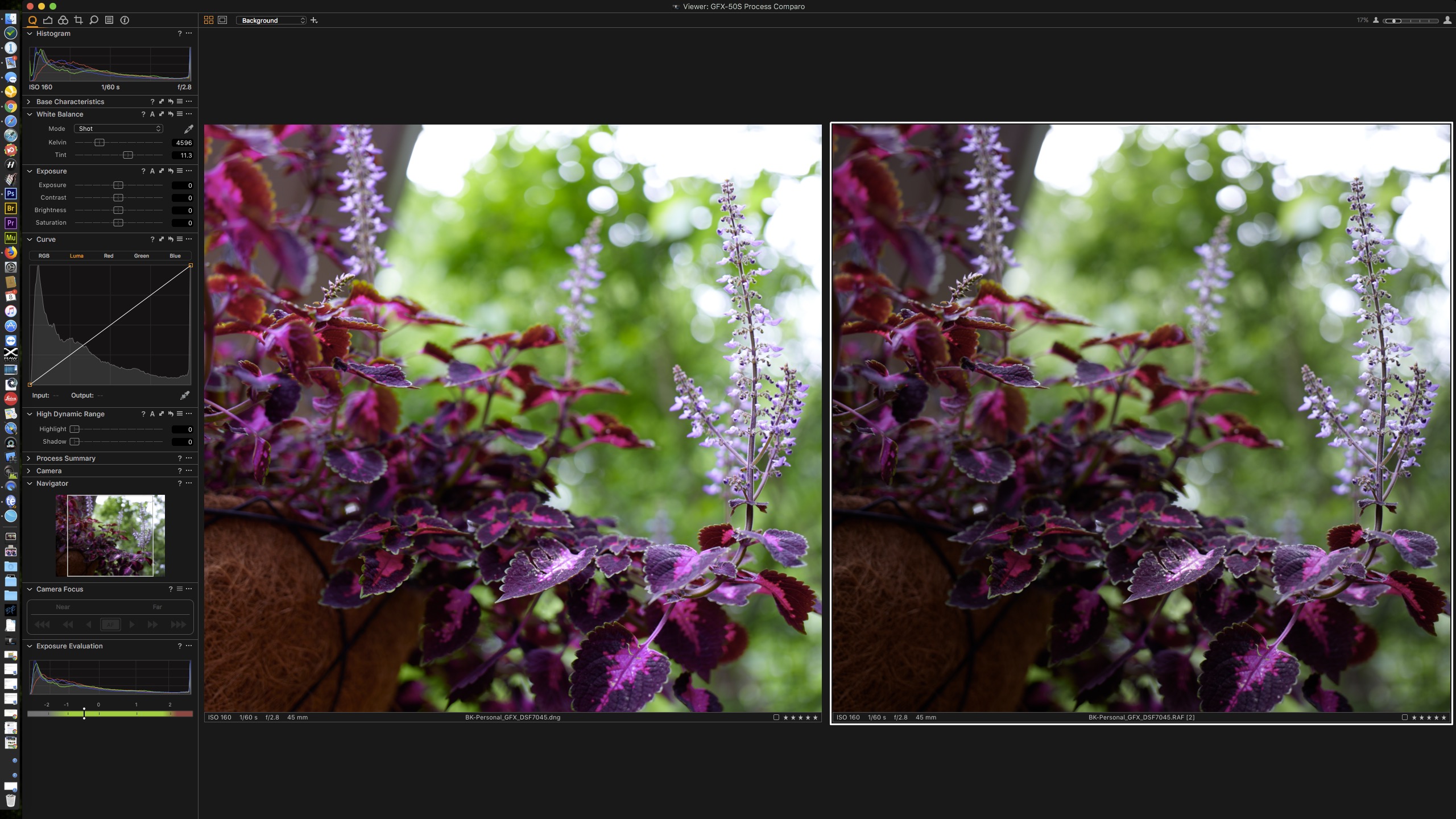
RAF converted to DNG vs Capture One RAF
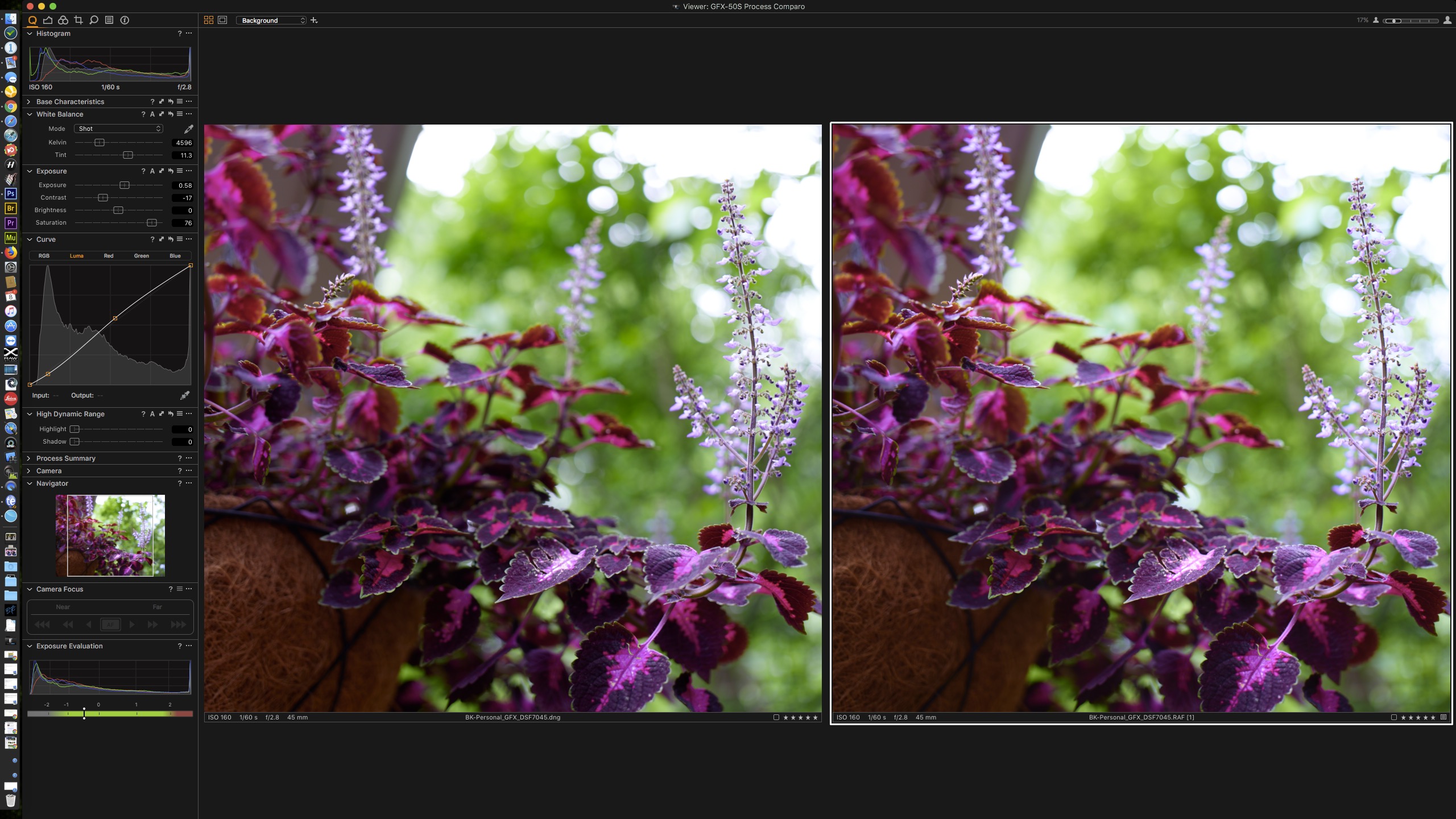
Capture One RAF made to emulate original RAF–>DNG conversion
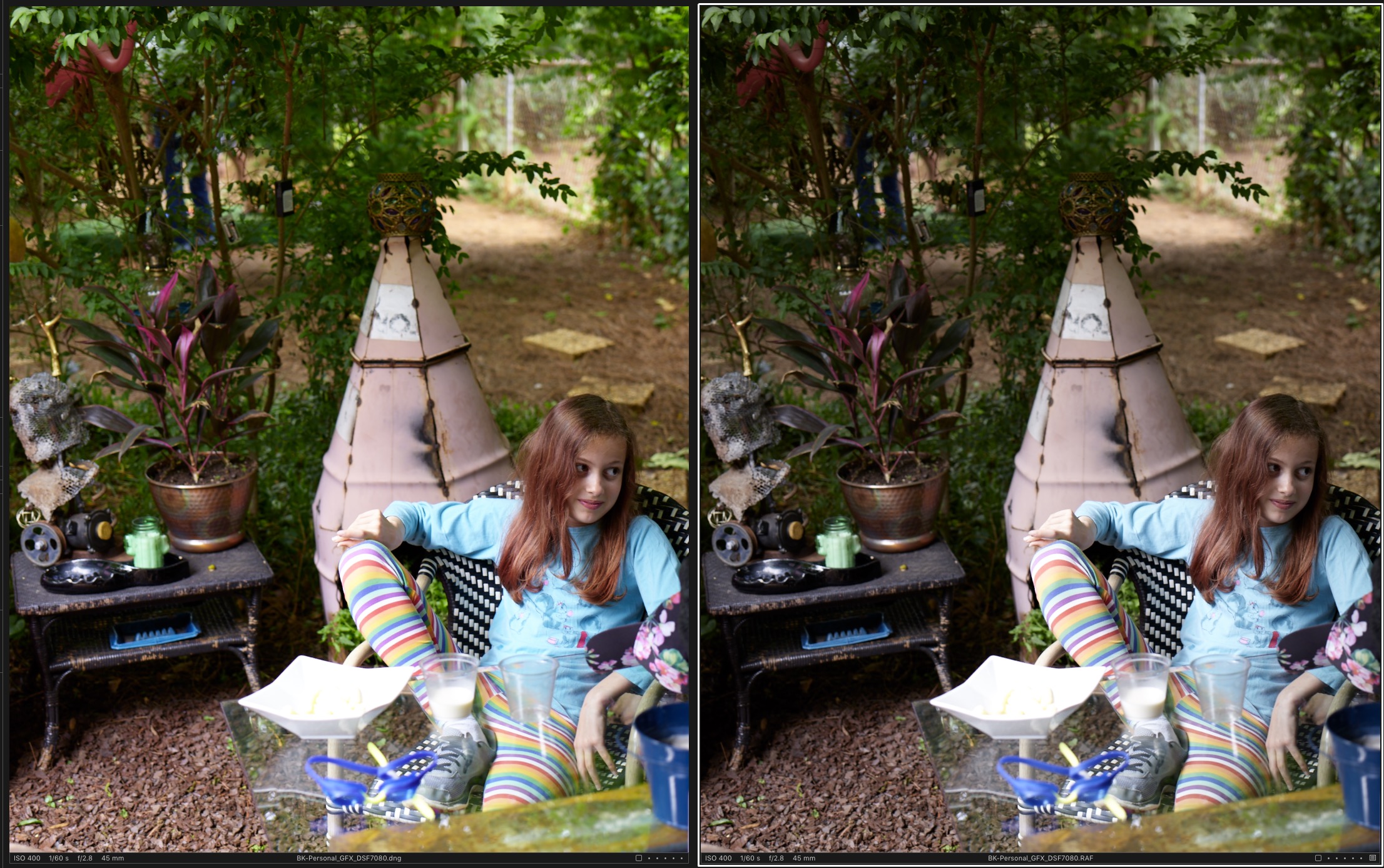
Punchy greens and saturated color with too much luma on left, more natural RAF handling natively in Capture One
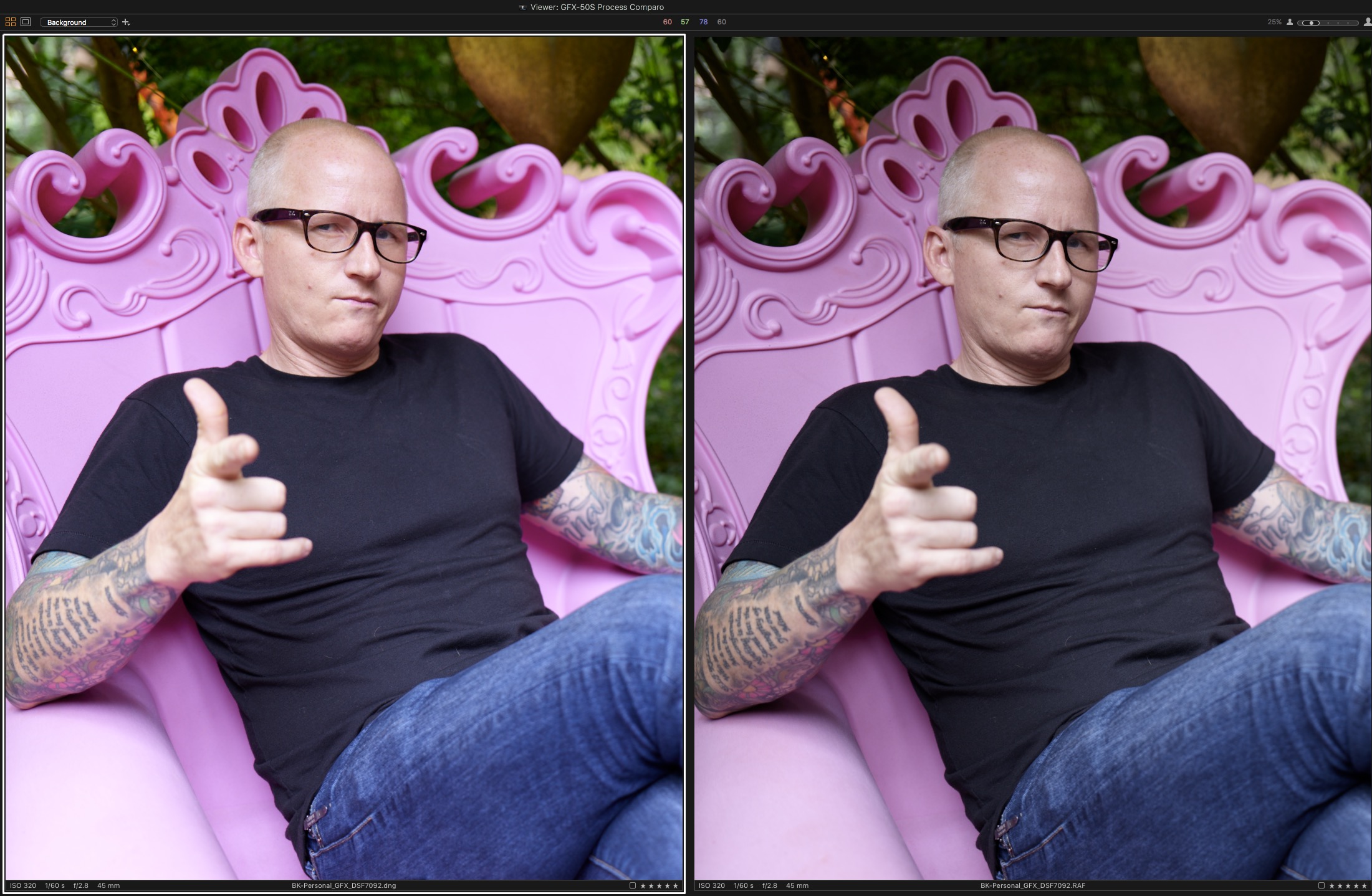
Much better skin tones on Capture One RAF translation
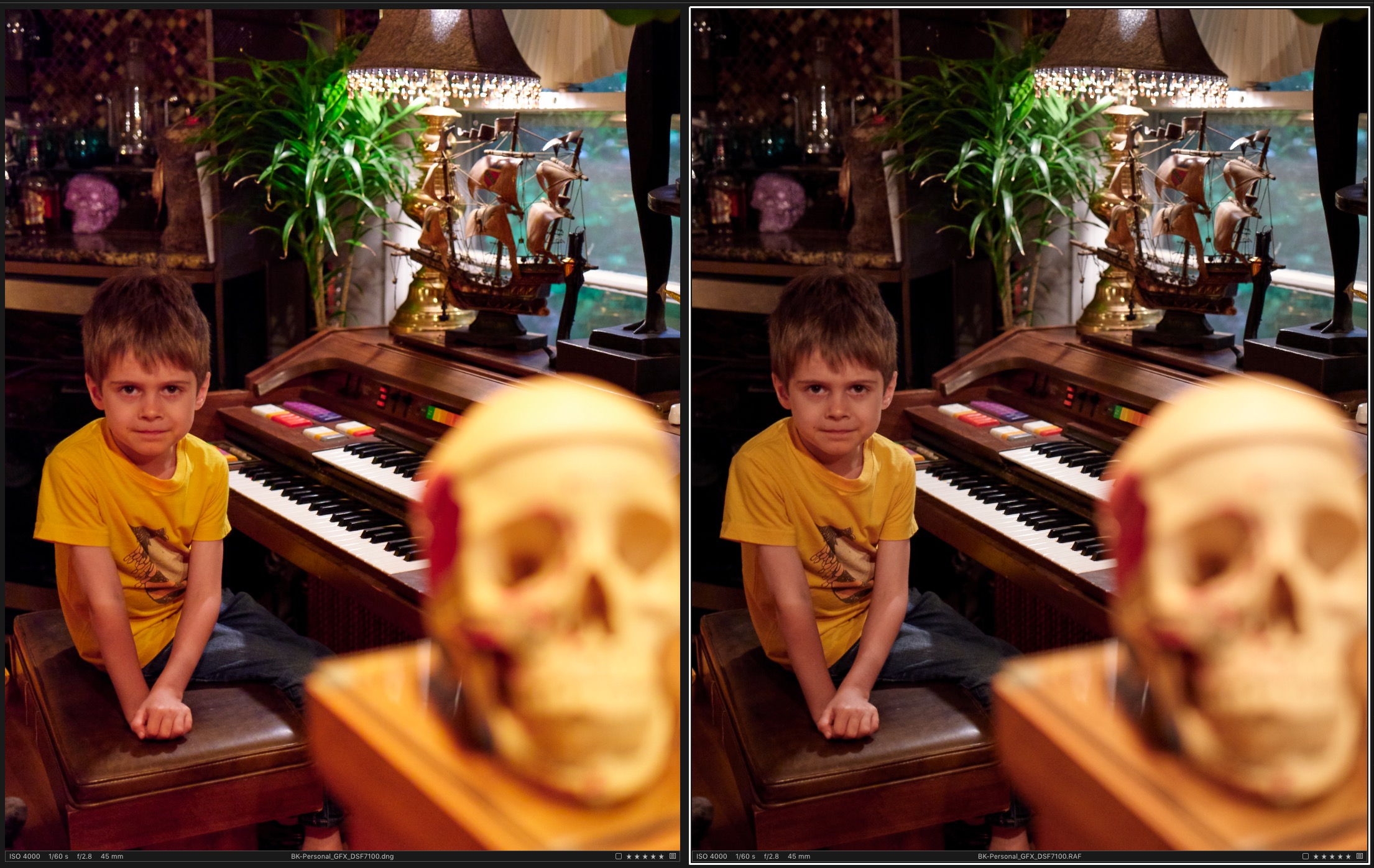
Skin tones especially better on 4000 ISO files with Capture One file handling
Overall, we’re very pleased that Capture One now supports the GFX 50S and that shooters of the system don’t need to jump through various hoops to get back into the features and control of the world’s best Raw imaging software.